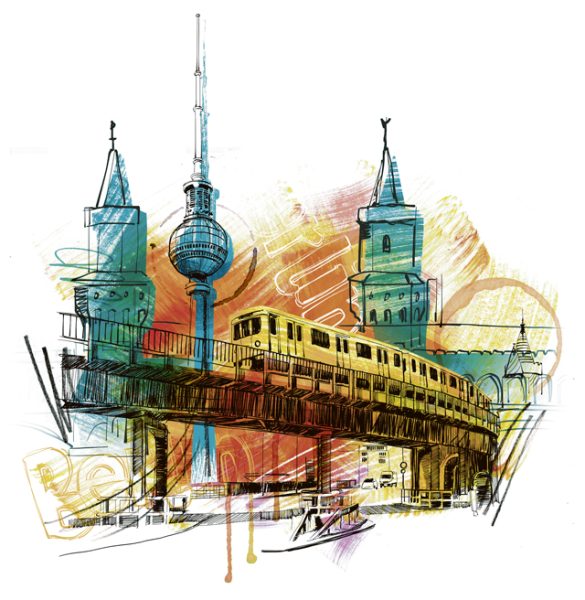
Berlin is not only the capital and largest city in Germany with its 3.7 million inhabitants. It has always been known as the capital of diversity and freedom. In the roaring 1920’s it was famed for creativity, a wild nightlife scene and innovation. Due to the many “speeding” cars (at about 20 km/h) the city installed the first traffic light in Germany in 1924. What an anniversary!
For forty years it was also the only city in the world surrounded by a wall and located in an isolated location amidst a different country. It is a metropolis that sets trends and is full of surprises. We’ve collected a few facts that you may not know:
Berlin is geographically nine times larger than Paris and feels much less cramped. Berlin has 4,000 inhabitants per square kilometer, while Paris houses 21,000 people in the same space. It is also home to the largest community of Turks outside of Türkiye with 110,000 people.
The longest open-air gallery in the world. East Side Gallery is 1.3 kilometers long and is part of the former wall. It displays over 100 murals from artists around the world, is located on the banks of the Spree River in Friedrichshain and draws up to two million visitors a year.
There are more museums than rainy days in Berlin. One-hundred eighty museums outdo the average 106 rainy days of the year. The most visited ones are Hamburger Bahnhof, Sammlung Boros, Gropius-Bau, König Galerie, Berlinische Gallerie and Check Point Charlie.
The public transport system is 4,473 kilometers in total with trains, trams and buses running 24/7. This means, that when running all day, the transport system goes around the earth 8.7 times a day. In comparison, Paris has 215 kilometers of public transport and London 400 kilometers.
Berlin Zoologischer Garten is the most visited zoo in Europe. It is home to over 20,000 animals and 1,300 different species on an area of 82 acres. It also offers fun activities for young and older visitors and allows some interaction with animals.
Döner spits galore! It is noted that a Turkish immigrant introduced the first Döner Kebab in Berlin in the late 1980’s. He adapted the style from the typical version in his home country. One spit has about 63 kilograms of meat and 950 spits are sold per day, equaling 60 tons of meat per year!
There are around 1,700 bridges in Berlin, the most attractive and famous one is the Oberbaumbrücke between Kreuz-berg and Friedichshain, not far from the East Side Gallery.
Thus, it has more bridges than Venice. Berlin also has more waterways than Amsterdam, Stockholm and Venice together, so hop on a boat and cruise the city.
Berlin is one of the greenest cities in Germany. About 50 percent of the city consists of buildings, but roughly one third is green with woods, parks, gardens, rivers and lakes. Tiergarten located near Brandenburger Tor is 280 hectares large, somewhat smaller than Central Park in New York City.
Hungry and thirsty at midnight? Then venture to a Späti, (literally a “latey”) a small convenient store where you can buy essentials at any time of day or night just around the corner. There are 1,000 Spätis spread around the city.
Capital of dog lovers. In Berlin you can take your furry friend (almost) everywhere and there are about 200,000 dogs, while the number of cats, pet rabbits and guinea pigs is unknown. Unfortunately, this also amounts to annually 55 tons of droppings.
Single capital of the German republic. Up until 2022 Berlin had 49.8 percent of singles or people not married. In 2023 Munich topped this record with 50.2 percent singles, but Berlin still has the overall highest number with 1.8 million individuals.
Berlin recorded about 12 million visitors in 2023, thereof 1.2 million Americans. Were you one of them? If not, it’s time to hit the road and explore for yourself!
Last, but not least, the Berlin Wall was opened on the evening of Nov. 9, 1989, 35 years ago, another occasion to celebrate!


